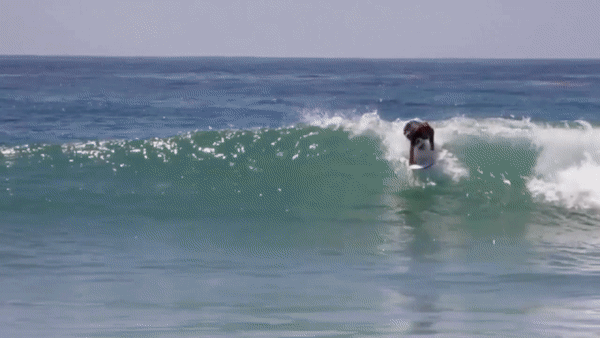If you’re new to skateboarding, you’ve probably realized that there is a lot of vocabulary to learn. Few terms in skateboarding cause as much confusion to the newly initiated as backside and frontside. What are they, and what is the difference?
Misconceptions
Before we get into what backside and frontside are, let’s discuss what they are not. These terms have nothing to do with the direction you travel as you simply roll on your board. They do not mean forward and backward.
When skateboarders ride backward, we can either use the term fakie or the term switch to describe the direction they they are traveling. If they are riding forward, we call it regular. When it comes to direction, it does not matter if a skater is goofy- or regular-footed. Riding forward is riding regular. Frontside and backside are terms that describe completely different actions in skateboarding.
The simple breakdown
Frontside and backside are the terms we use to describe the direction a skateboarder turns during a trick. However, these terms also describe where things happen or where obstacles are in relation to the skater. The terms date back to the surfing roots of skateboarding, and they are still used to describe the action in surfing to this day.

In surfing, when riders are facing the wave, they are surfing frontside. When their backs are to the wave, they are surfing backside. The same is true for skateboarding. When we approach an obstacle frontside, it is in front of us – toward our front side. If it is behind us, we are approaching the obstacle backside.
Turns
The terms frontside and backside are also used to describe which way skateboarders turn when they do tricks. Whether it is a kickturn, a 180 or a 360, we use the same terms to differentiate between clockwise and counter-clockwise turns. Frontside turns are done so that you face the direction of travel. In backside turns, your back is to the direction you are going.

Grinds and slides
Things can get even more confusing when describing tricks done on obstacles. Sometimes choosing the right term is straightforward.
On a frontside lipslide for example, you approach the obstacle frontside and ollie frontside 90 degrees to get the tail over the lip. Then, you can turn backside to come off regular, or turn frontside to come off fakie.

It is different for some other tricks, though. Take the backside boardside. For this trick, you approach the obstacle backside, then you ollie frontside 90 degrees.

So, a frontside ollie nets you a backside trick. The key is, it isn’t the direction of the turn that matters, but rather where the obstacle is in relation to the skater that determines if a trick is frontside or backside. If the obstacle is behind you, the trick is backside. If you approach the obstacle frontside, the trick is frontside.
Which one’s harder?
Most skaters learn frontside 180 ollies before they even try backside 180s. It’s only natural, as frontside turns have you facing where you’re going. Backside 180s leave you blind to you’re landing spot, though, so they seem scarier. However, neither is necessarily more difficult than the other. Most skaters find turning to one side or the other more comfortable. For many, the more natural way to turn is frontside. But, for others, backside feels more comfortable.

The same is true for grinds and slides. Skaters more comfortable with frontside turns usually find backside boardslides and frontside lipslides easier to learn, but that’s likely because they are facing where they are going. For some others, having their backs to their landing spots is – inexplicably – more comfortable. Neither is inherently more difficult, though. You can get comfortable with them both if you do them often enough.
That’s a wrap
If you’re still confused about the distinction between frontside and backside, just remember this: Unless you’re talking about turns, the correct term to use depends on where things are in relation to you. If an obstacle is in front of you, the trick is frontside. If it’s behind you, the trick is backside. Grabbing the edge of the board in front of you equates to a frontside grab, while grabbing behind you is a backside grab.
Get comfortable with these terms, because they are used to describe the majority of tricks in skateboarding. Do not ignore them. When you watch pros skate, ask yourself if a trick was frontside or backside. Figure out whether the pro turned frontside or backside to do the trick, and see how those relationships are sometimes the same and sometimes opposites. Sooner or later, it will all make perfect sense.


Cheap investments in Dubai are aplenty. Many people don't know that there are property options to buy in this emirate. Dubai property is sold at competitive prices and the prospects of a profitable investment go up with each new project launch. Real estate agents Dubai have taken note of the affordable investment opportunities, which makes it possible for many to purchase property in Dubai.